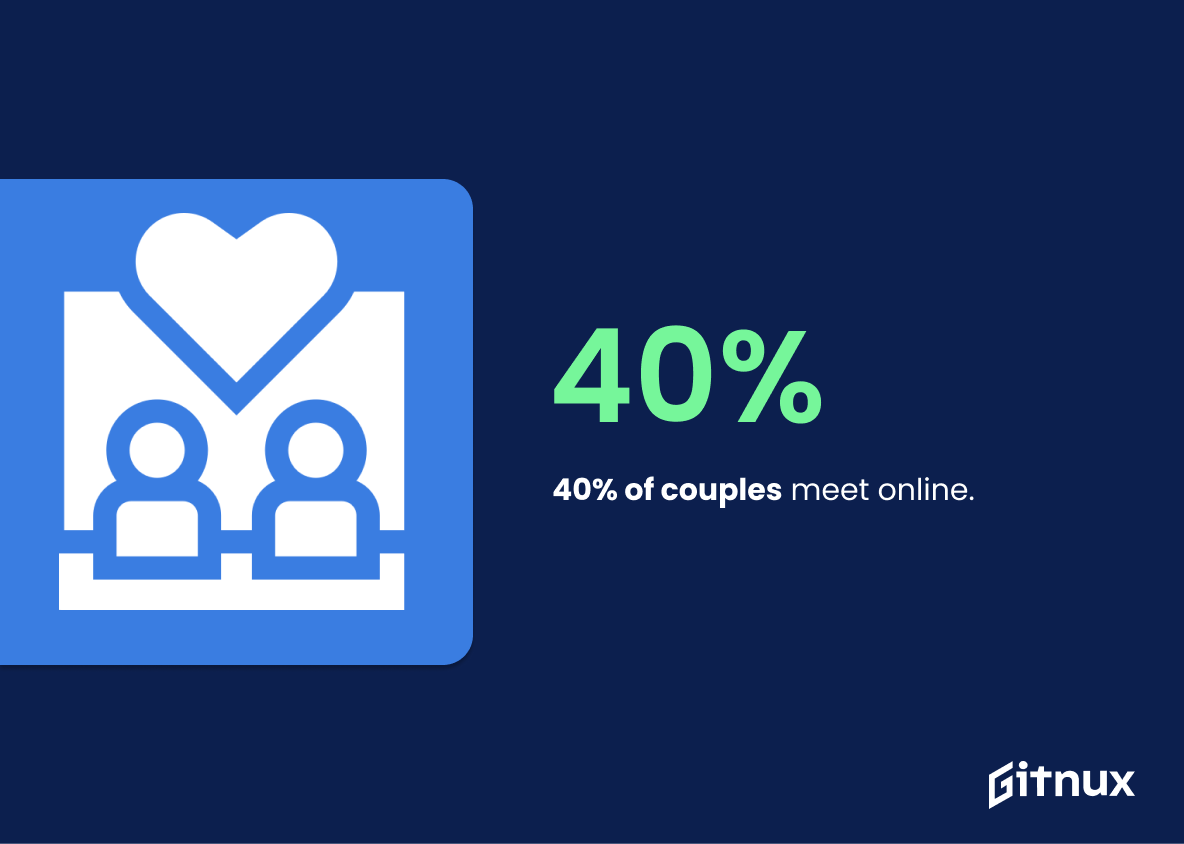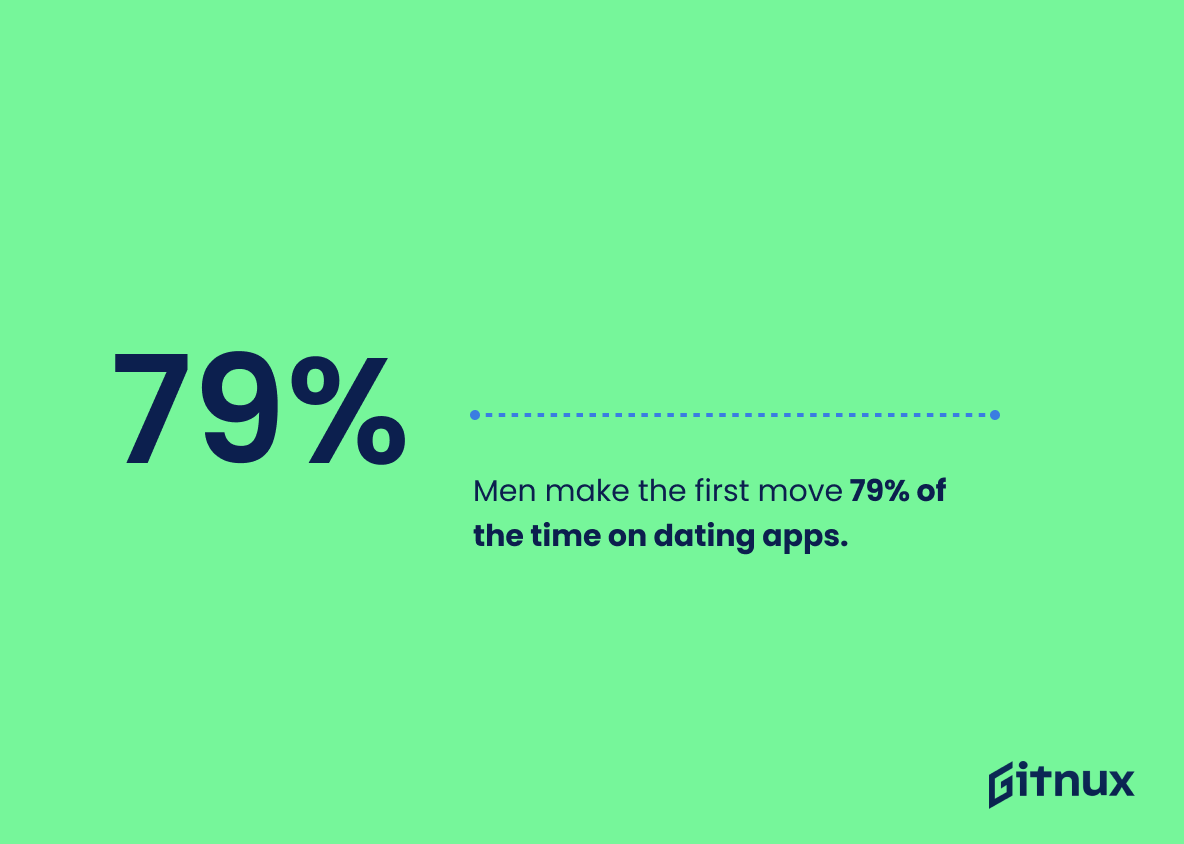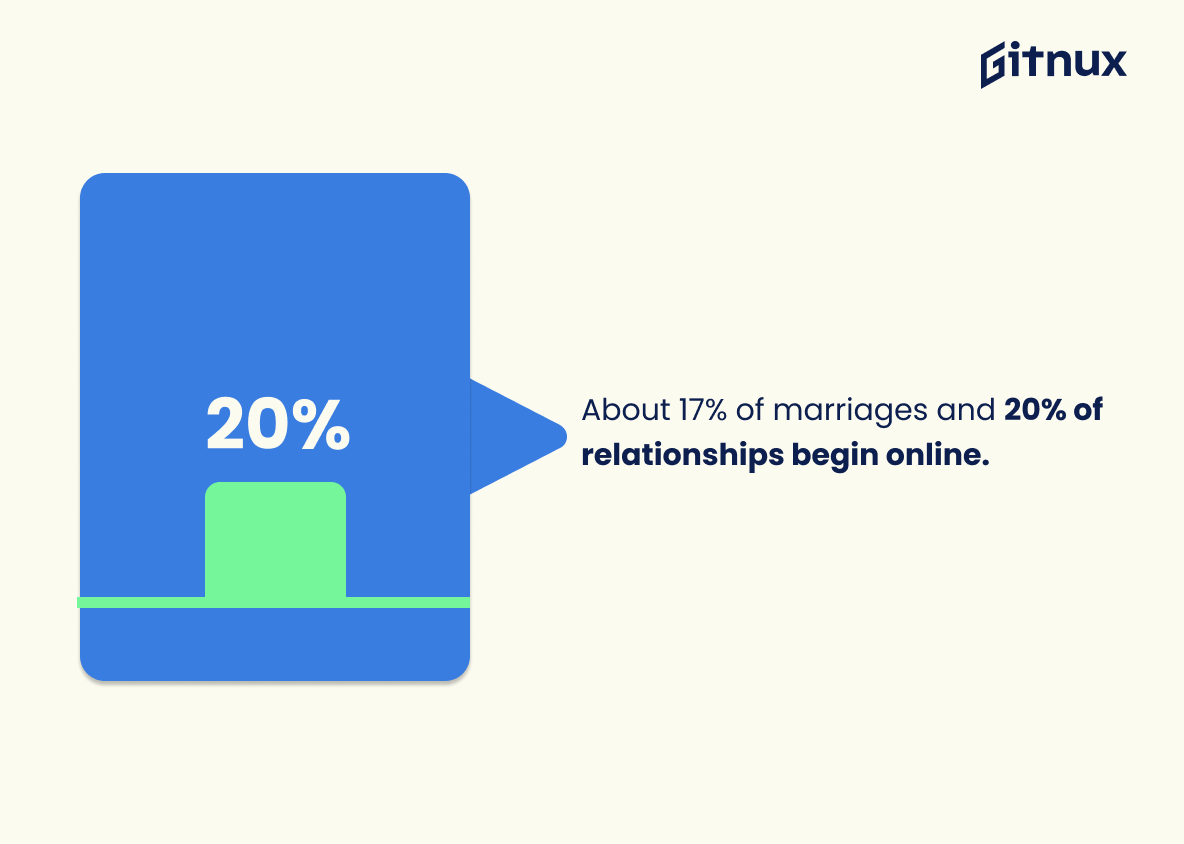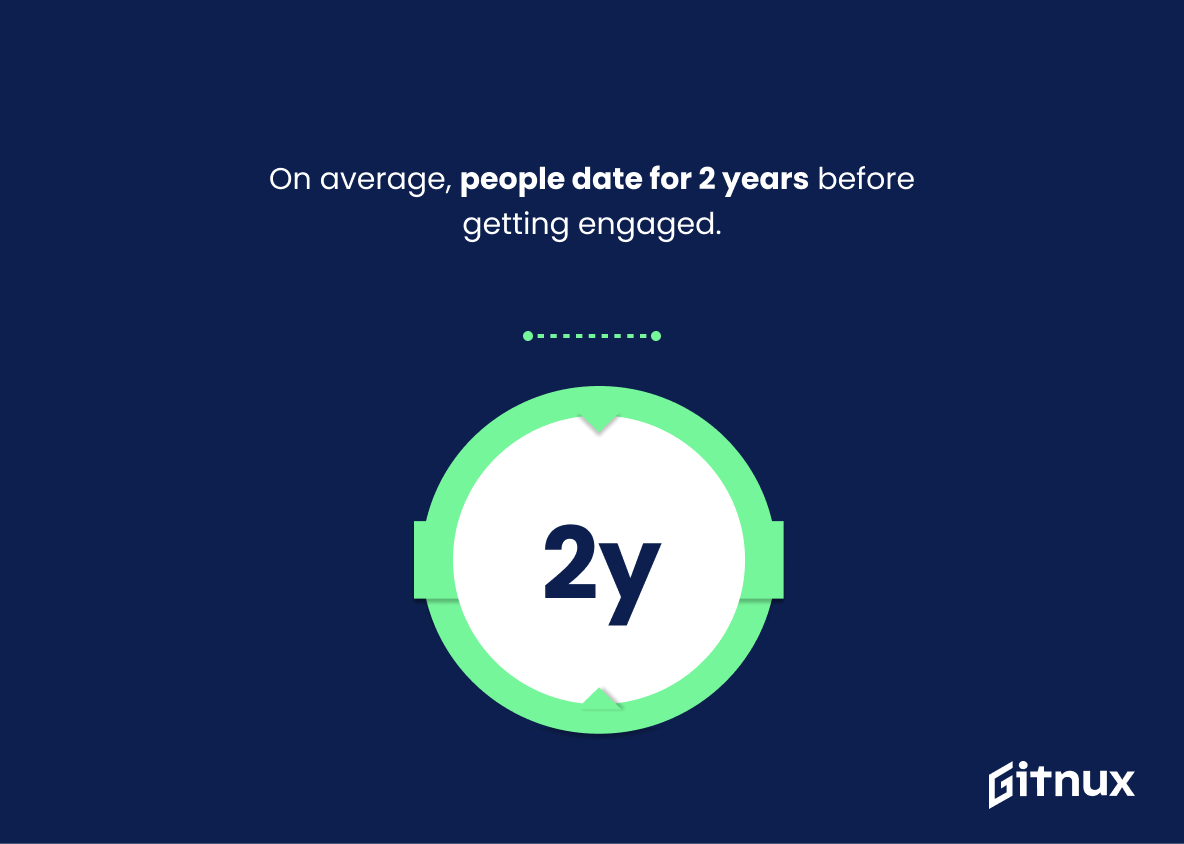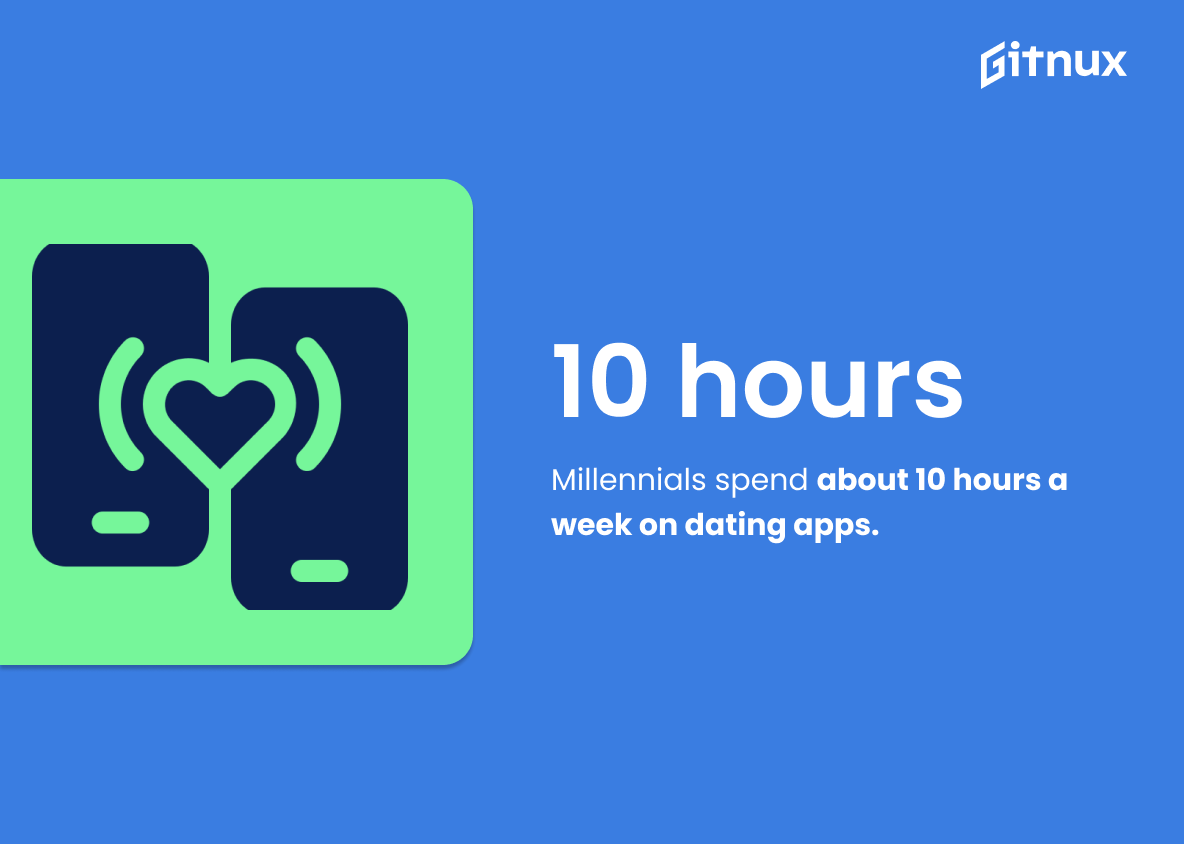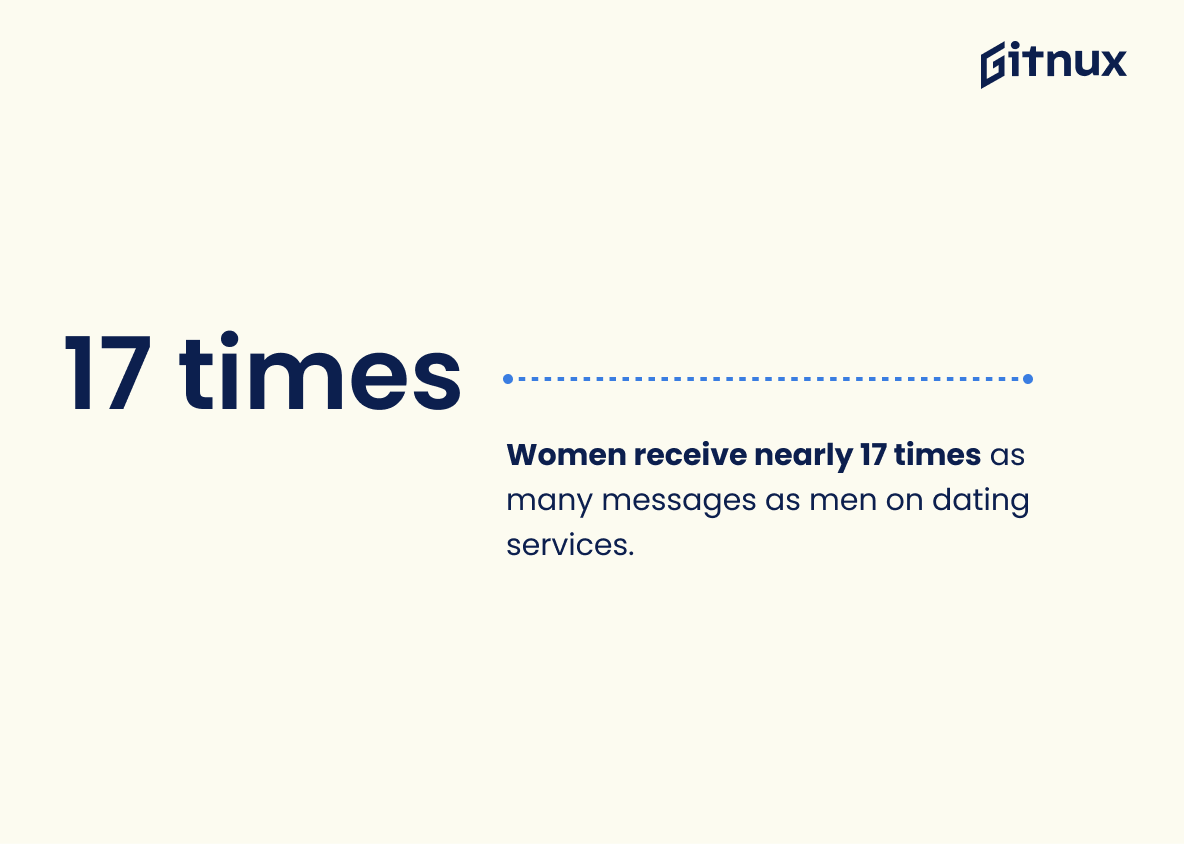In today’s digital world, finding love has seen a groundbreaking shift, with more and more people opting for online platforms to find their special someone. From choosing the perfect profile picture to penning an intriguing biography, every aspect plays an integral role in online dating.
This blog post delves into the captivating realm of dating statistics, offering an insightful lens into the surprising figures and trends shaping the contemporary dating landscape. Whether you’re a curious onlooker or an active participant in this digital love game, these statistics will definitely provide you an intriguing understanding of the dynamic matrix of online dating.
The Latest Dating Statistics Unveiled
40% of couples meet online.
In the dating arena, the digital platform has emerged as a romantic cupid, as evidenced by the fact that 40% of couples now meet online. This intriguing figure sheds light on the transformative shift from traditional face-to-face meetups to the digital dating stage.
It challenges the traditional stigma around online dating, proving it as an effective channel for finding love. Furthermore, this statistic also underlines the role of technology in interpersonal relationships, contributing to a comprehensive understanding of modern dating trends sought by readers of a blog post on Dating Statistics.
53% of online dating users lie on their profiles.
Delving into the intriguing realm of dating statistics, it’s rather fascinating to unearth the truth that over half of online dating users – precisely 53%, exercise the art of deception while curating their profiles. This intriguing discovery weaves a cautionary tale about the convoluted intersection between the virtual and real worlds.
It acts as a profound reminder for the readers, stressing the need for vigilance while traversing the digital dating landscape. Seemingly perfect matches may not always be what they seem, adding an extra layer of mystery and intrigue to the online pursuit of love.
Men make the first move 79% of the time on dating apps.
Highlighting ‘Men make the first move 79% of the time on dating apps’ unravels an interesting pattern in modern-day courtship technology and underscores the traditional belief system of male-driven initial engagement. In a blog post on Dating Statistics, such a figure punctuates the narrative offering both an engaging fact for readers and a thought-provoking commentary on gender roles in digital dating.
It fuels discussion around societal norms, the evolution of dating protocols, and it could potentially be a springboard for exploring the psychological motives behind interactions on dating apps. It serves to remind us that though technology continues to revolutionize how we date, age-old practices are more resilient than we might expect.
About 17% of marriages and 20% of relationships begin online.
In the realm of modern romance, the digital dimension has notably redefined how connections are made. The intriguing statistic revealing that 17% of marriages and 20% of relationships spark life from online beginnings, spectacularly illuminates this aspect. From this perspective, the keyboard, not Cupid, is increasingly firing the arrows that merge two hearts.
By weaving this statistic into a blog post on dating, we elegantly unveil a broader picture. It elucidates a substantial shift towards virtual platforms in the pursuit of companionship and love, painting a more comprehensive image of contemporary relationship trends.
On average, people date for 2 years before getting engaged.
Delving into the realm of amorous and emotional connections, the statistic provides a fascinating glimpse into the timeline of modern relationships. The two-year average period before engagement sheds light on the duration people necessitate to foster a deep and meaningful bond, undoubtedly a key decision-making factor for potential marriage prospects.
This insight in the blog post about Dating Statistics could serve as an informative guide, helping readers to compare and align their personal romantic journeys with the common trend. Hence, it blends an element of relatability and valuable knowledge, rendering it a significant inclusion in the discourse on dating.
Millennials spend about 10 hours a week on dating apps.
Interpreting this statistic throws a spotlight on the evolving landscape of dating in the contemporary era, particularly among millennials. This decisively confirms the digital nature of modern courtship, pointing to how dating apps have become a default environment for romantic quests for this generation. Quantifying it to approximately 10 hours per week exhibits the substantial amount of time millennials are choosing to invest in digital platforms for their pursuit of love and companionship.
Nestled amongst dating statistics, this statistic serves as an intriguing testimony to the dedication and trust millennials are placing in technology to navigate their love lives. Such an insight could provide fodder for discussions on human-tech interaction, evolution of relationships, and the profundity of dating app influence in millennial culture.
49 million people from the United States have tried online dating.
Highlighting the figure of 49 million U.S. people who have explored the realm of online dating serves as a powerful testament to the increasing importance and prevalence of digital love connections in our modern society. It signifies a prominent shift in the dating habits and practices and presents undeniably compelling evidence of the widespread acceptance and usage of online platforms as a viable and increasingly preferred option to find romantic partners. Considering this, it provides a valuable context and sets a clear narrative for readers and further discussions surrounding dating trends and behaviors.
Women receive nearly 17 times as many messages as men on dating services.
In unraveling the mysteries of the dating world, unearthed from digital realms of romance is a statistic with no ordinary significance. Women are the recipients of approximately seventeen-fold more messages than men on online dating platforms. This disparity acts like a telescope, shedding light on the intriguing dynamics of digital courtship.
In a blog post addressing dating statistics, this statistic becomes the pulsating heart of discussion, offering readers intriguing insights into gender differentiation in online romantic interaction. It paints a vivid image of the virtual dating landscape where women are coveted communicative targets while men are often the initiators.
Moreover, it fuels intriguing questions on societal norms and behaviors. Is it the digital echo of chivalry where men make the first move or an illustration of prevalent gender roles setting the rules of the game in the online dating world?
Contributing to a more comprehensive understanding of modern love, this statistic also opens discussions on the human psychology in the anonymous space of digital dating. Lastly, it throws light on the choices and strategies users may need to deploy to navigate their way through the crowded lanes of online love connections, capturing the readers’ attention and fostering a deeper grasp of the dating world’s highs and lows.
About 1 in 5 young adults (ages 20-24) use mobile dating apps.
In the dynamic world of dating, youthful adults – those aged 20-24 – are engaging digital cupid. The statistic signifies a notable 20% usage of mobile dating apps among this demographic, spotlighting the technology-infused shift in modern dating behaviors. Played out against the backdrop of the digital revolution, this scenario offers a revealing side note to the matchmaking saga for those keen on understanding dating trends.
A blog post discussing dating statistics would be incomplete without this fact, as it highlights the profound embrace of technology among millennials and post-millennials in their quest for love. Continuing to ignore this piece of data would be akin to turning a blind eye to an evolving narrative of romance, designed by the digital age.
On average, people spend about $243 on a date.
Delving into the fascinating world of dating, one cannot ignore the economic undercurrents that play a significant role. Establishing an average spending figure of $243 per date paints an intriguing picture about the financial habits entrenched within the dating culture. This figure serves as an insightful yardstick for readers, assisting them in assessing their own financial expenditure in dating scenarios; budgeting according to societal norms or consciously choosing to diverge from them.
Furthermore, this figure also stirs dialogue about socio-economic disparities, gender expectations with payments, and the impact of consumerism on romantic rituals. In the grand scheme of romance, this dollar value provides a pecuniary perspective to the emotional investment made on a date.
65% of same-sex couples meet online.
Unveiling the curtain on the fascinating realm of dating landscape, an impressive 65% of same-sex couples can trace the genesis of their love stories to the digital world. This sterling statistic interweaves a potent narrative within the fabric of our blog post on dating statistics, fortified by the fact that the thread of human connections is progressively being spun online.
With this intriguing truth, we find that not only is love breaching conventional barriers, but also redefining its pathways in our highly digitalized epoch. It further provides a deeper understanding of how modern technology shapes the dynamics of romantic relationships, particularly amongst same-sex couples, a phenomenon which our blog confidently navigates through.
72% of consumers believe online dating has become more accepting in the past 10 years.
With an illuminating spotlight on the perceptions of consumers, this statistic underlines the growing openness towards the realm of online dating. In the rapidly evolving digital age, this remarkable shift in acceptance over the past decade, as suggested by the 72% figure, offers valuable insights for readers of the blog post about dating statistics. It lends an interpretive lens, allowing an engaging exploration of societal changes that influence, and are influenced by, digital trends in dating.
This statistic forms a resonating narrative that grants a deeper understanding of the digital dating culture shaping our lives today. It serves as a compass, giving direction to dialogue, discussions and debates on this intriguing aspect of human relationships in the digital era.
39% of heterosexual couples that got together in the US in 2017 met online.
In the realm of the ever-changing landscape of dating, this particular statistic sets an intriguing milestone for digital lovers. The story it tells is as engaging as it is revelatory – nearly four out of every ten straight couples that sprouted in the US in 2017 owe their beginnings to online connections.
It broadcasts a shift in societal norms, underscoring the fact that the once-stigmatised stigma of internet dating is graying, making way for a new era. This potent insight not only paints a vivid picture of today’s dating scene for readers but also provides valuable data for anyone scrutinizing modern love trends, reshaping perceptions, and crafting strategies around it.
Conclusion
To sum up, the realm of dating is a multifaceted and ever-evolving phenomenon. The statistics cited in this blog post clearly show how the dynamics of dating are consistently shaped and influenced by a multitude of factors such as age, technology, societal norms, and personal preferences.
While these numbers can provide valuable insights, remember that the numerical data isn’t everything. The key to successful dating lies in authenticity, communication, and understanding. May these stats serve as information tools that could help you navigate your way better through the modern dating scene.
References
0. – https://www.www.statista.com
1. – https://www.www.bbc.co.uk
2. – https://www.www.pewresearch.org
3. – https://www.www.technologyreview.com
4. – https://www.www.verywellmind.com
5. – https://www.www.thediamondauthority.org
6. – https://www.www.marketwatch.com
7. – https://www.morningconsult.com
8. – https://www.ourworldindata.org
9. – https://www.www.businessinsider.com
10. – https://www.www.vox.com
11. – https://www.www.datingsitesreviews.com
